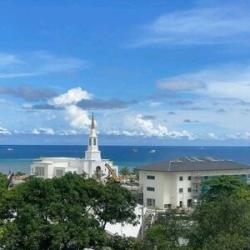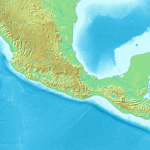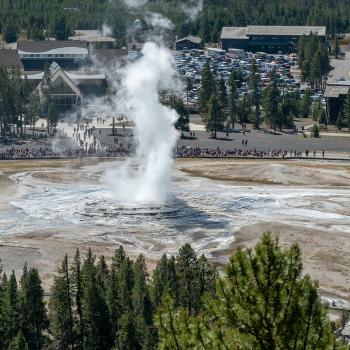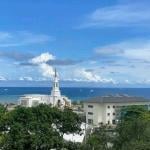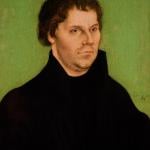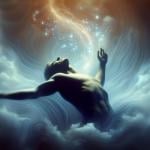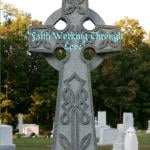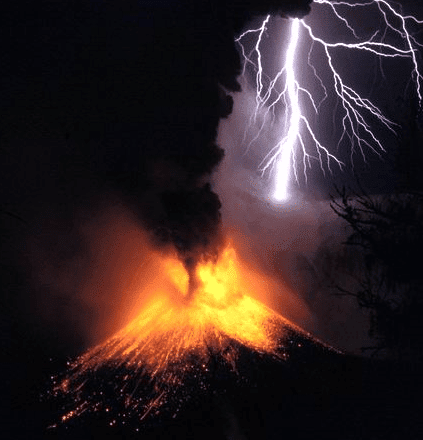
(Wikimedia Commons public domain photograph)
I share a few more notes here from a significant article that a longtime friend of mine wrote nearly a quarter of a century ago: Bart J. Kowallis, “In the Thirty and Fourth Year: A Geologist’s View of the Great Destruction in 3 Nephi,” BYU Studies 37/3 (1997-1998).
Dr. Kowallis begins his article with a three hundred year-old traditional oral account of the enormous volcanic eruption that occurred off the northeastern coast of Papua New Guinea. But it’s not the only such report.
Another describes “thunder, lightning, and tremors” as forerunners to the great “time of darkness.” Another reports that, leading up to the eruption, “a storm was on its way and there was a rustling and whistling in the air.” Still other reports talk of winds and earthquakes, floods and loud noises, fumes, and unusual variations in temperature. During the eruption itself, at least as the eruption was perceived by survivors in the region, many people were killed when their huts collapsed or by falling stones. Others apparently died from fumes, or by sores caused by hot falling volcanic ash. Along the coasts, crops and trees were destroyed by floods of water. Understandably, too, in the wake of the cataclysm, with crops dead or dying, fields buried under volcanic materials, trade routes disrupted, and farmers and merchants among the fatalities, many who had survived the violence nonetheless died of starvation. One account explains that “all bad men, trouble makers, people with bad thoughts, thieves, etc.” perished during that “time of darkness.” (138)
It is astonishing — and it is surely a reflection of the magnitude of the event they narrate — that such accounts survived for more than three hundred years. But what is perhaps most amazing, perhaps, is that (apart from some exaggeration and a few embellishments) the stories, seen altogether, seem to accord with what physical or geological analysis of the effects of the great eruption has disclosed about it. “All of the conclusions based on this physical evidence,” says Professor Kowallis, “agree well with the oral traditions.” (138)
And, taken together, they are far more than slightly reminiscent of the account given in the Book of Mormon, in the book of 3 Nephi.
As the abstract of Dr. Kowallis’s article says, “Geological studies and eyewitness accounts of volcanic activity show the likelihood that the massive destruction reported in 3 Nephi was caused by an explosive volcanic eruption.” (137)
Posted from Phoenix, Arizona



